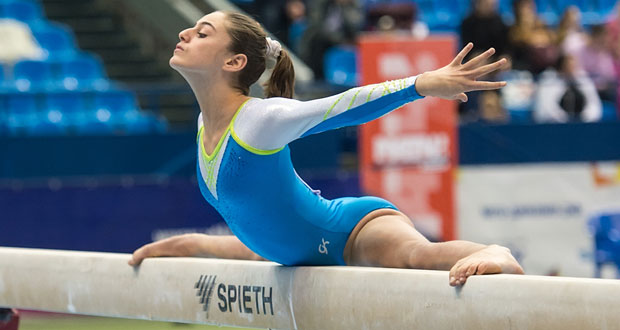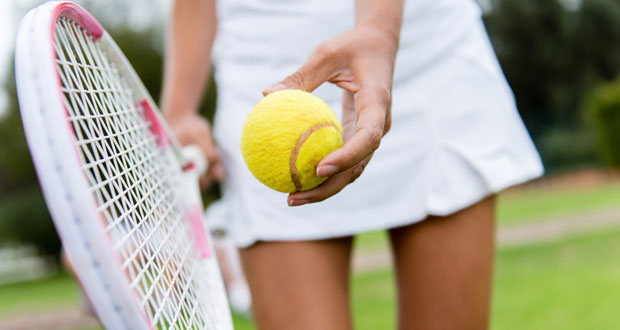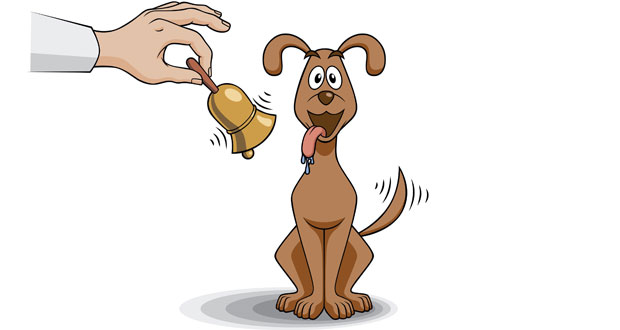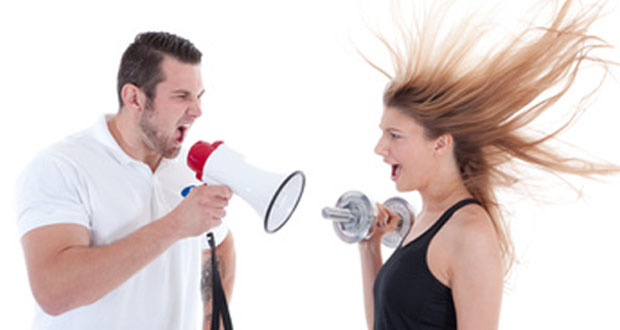This section describes the difference between abilities and skills, skill continuums, and their uses in a practical context.
Abilities
Your ability is the skills and qualities which make it possible for you to achieve a task. These are stable and enduring characteristics that are genetic and can be either completely perceptual, completely motor, or a combination (known as psychomotor).
Here is a list of abilities that are relevant to P. E. and can be assessed:
- Co-ordination
- Flexibility
- Balance
- Muscular power
- Muscular endurance
Skills
‘Skill is the learned ability to bring about predetermined results with maximum certainty, often with the minimum outlay of time or energy or both’ (Knapp).
A skill is the combined ability and knowledge which allow you to complete a task to a high standard. Skills are:
- Learned
- Permanent changes in behaviour
- Aimed at achieving a goal
- Learning of the skill is demonstrated by changes in the consistency of performance, making it more efficient and successful
- Fluent
- Aesthetically pleasing
As with abilities, skills can be perceptual (those that require information to be processed before performing a skilled action), motor (movement) or psychomotor (a combination). Skills can be classified on the continuums shown below:
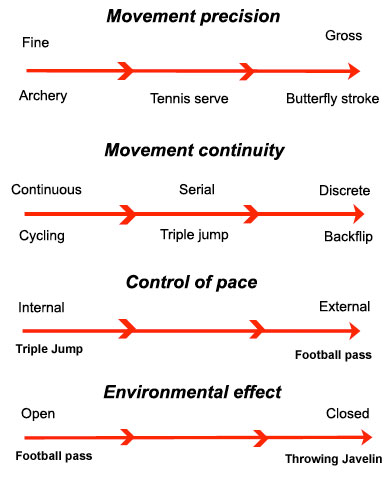
The diagram above demonstrates the skills continuums.
Gross/Fine Continuum
Movements can be fine (small, accurate movements, with small muscular contractions, as in an archery shot) or gross (large muscular contractions, dynamic movements, as during a butterfly swimming race) or anywhere along the continuum in-between.
Discrete/ Serial/ Continuous Continuum
Movements can be continuous, such as cycling, where the movement repeats over and over, serial, where there are distinct parts within a movement, or discrete, where there is a definite beginning and end.
Open/Closed Continuum
Movements can be open, where they are directly affected by the environment. For example, a footballer chooses the correct pass based on the number of defenders closing down the space in front of them. They can also be closed where they are not directly affected by the environment. The skill is performed the same way every time eg throwing a javelin.
Internally (Self) Paced/Externally Paced Continuum
Movements that are self-paced are controlled by the performer. They will decide the rate at which the skill is performed e.g. a triple jumper performing when they are ready to do so. Externally paced skills are controlled by other players or factors e.g. being forced into a pass in football instead of being able to pass when you want to.

